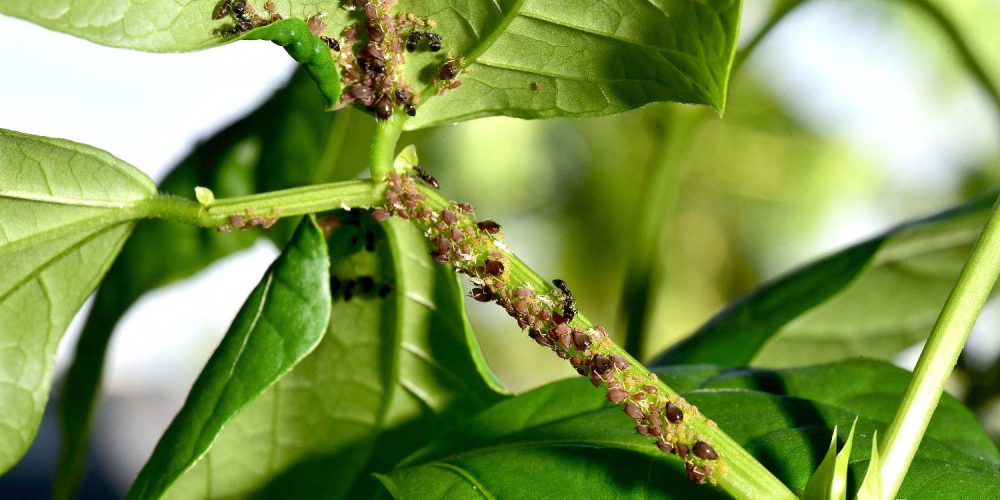Table of contents of the article
ToggleThe legume aphid is an agricultural pest that greatly affects crop quality and productivity, requiring precise strategies to combat it. In this article on your website, WORLD OF PLANTS, we will discuss the symptoms of infection and ways to prevent it
Symptoms of Aphids Beans
Name of the diseaseAphids Beans
Scientific name: Aphis craccovora
Type of disease: Insect type
Disease family: Aphididae
The infestation of this insect is severe in the spring and fall, and it is considered one of the important pests of beans. It causes great damage to the crop. In the case of a severe infestation, the insects cover all surfaces of the plant, suck the plant juices, and secrete the honeydew to which the dust sticks, and the black fungus grows on it, causing plant weakness and a lack of yield.
Causes of Aphids Beans
Weeds, especially hallucinose beans.
Suitable conditions for the spread of Aphids Beans
The number increases in winter and decreases in summer.
Development cycle of Aphids Beans
This type of aphid is characterized by the fact that individuals give birth throughout the year without fertilization and do not lay eggs, which is known as the phenomenon of parthenogenesis, and this insect does not have males. The insect molts four times until it reaches the juvenile stage, and each insect gives birth to between 15-100 individuals.
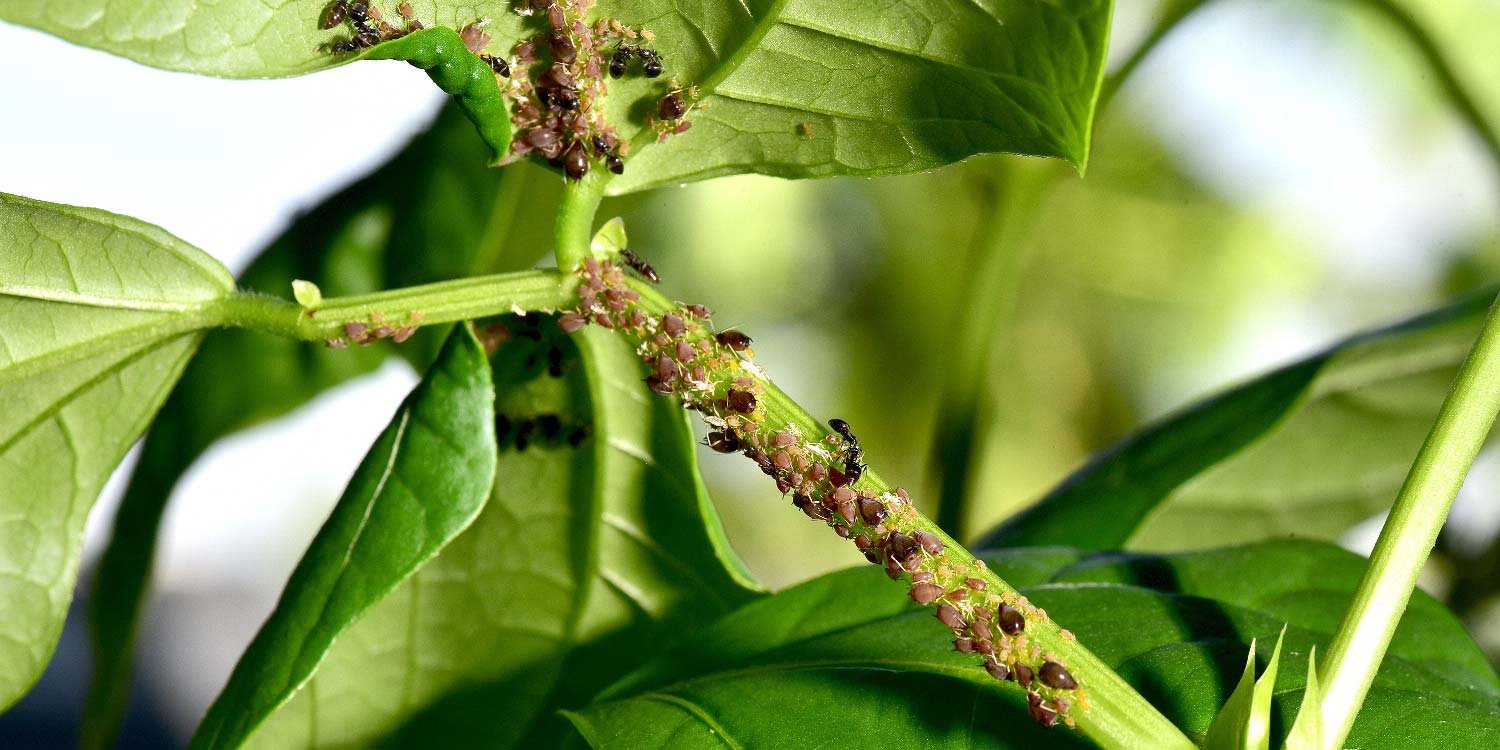
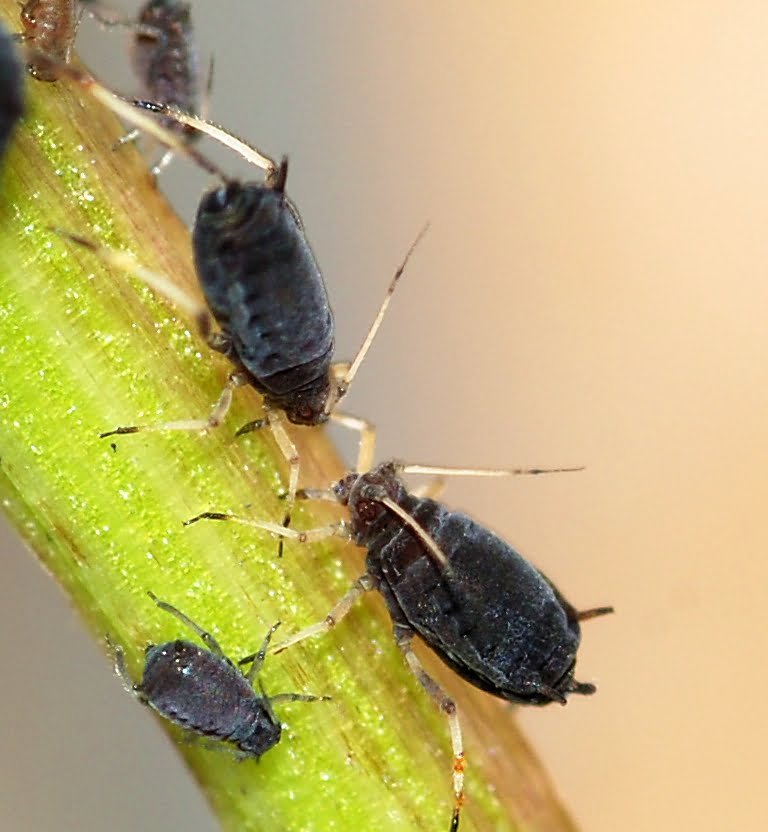
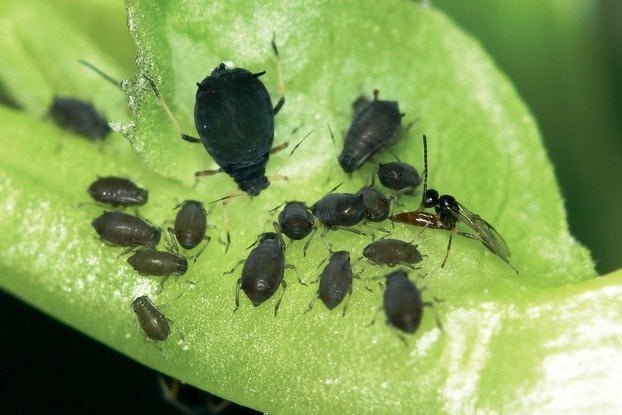
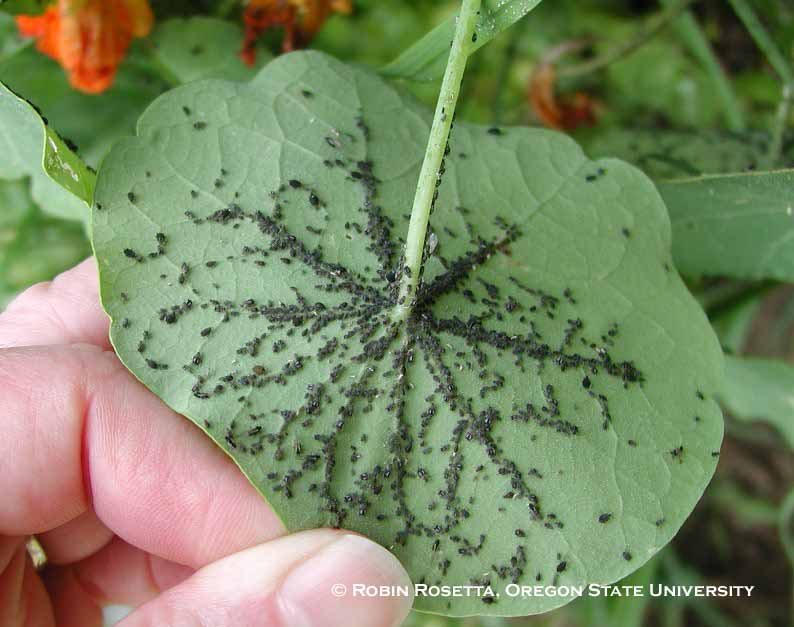
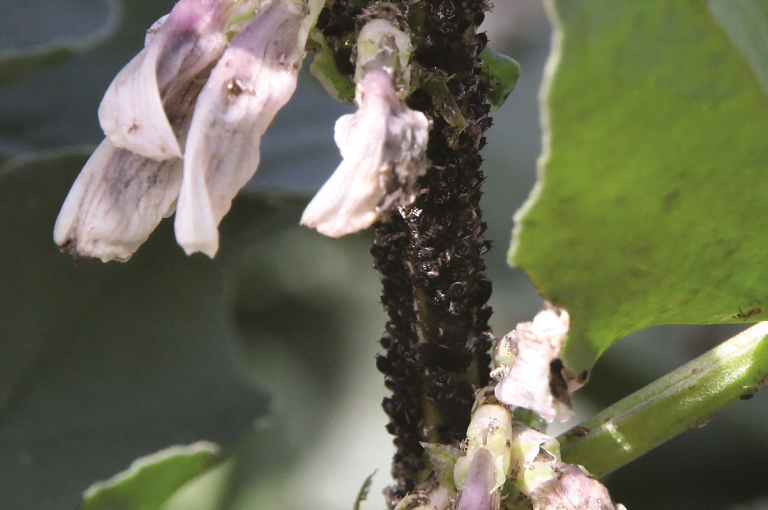
Losses of disease spread
These insects feed on the leaves, causing them to become deformed, then yellow and completely damaged. Thus weakening the plant as a whole and stopping its growth.
Cause attraction Aphids Others and ants come to the plant, which come to feed on the sticky, sugary liquid that aphids secrete as droppings on the leaves and stems.
The accumulation of a sticky, sugary substance on the surface of the plant leads to the appearance of... Sooty mold On some types of plants, this mold is a type of fungal growth that will change the color of branches and leaves to black.
One of the serious harms of aphids is that they spread viruses between plants.
It also attracts some types of insects that feed on plants, such as ladybugs.
Control strategy
Mechanical control
Physical control (tillage, sanitation, pruning, solarization)
Insecticides
Preventive measures to prevent the occurrence of the disease
Keep a variety of different plant species around the fields.
Get rid of the remnants of the previous crop.
Reflective plastic sheeting can be used on the soil to keep aphids out of the field.
Monitor the field regularly for early detection of any symptoms or lesions and determine the degree of severity.
Hand pick the larvae from the plant or dispose of the infected parts of the plant.
Weeds around the fields should be checked for the possible presence of aphid colonies in them.
Excessive irrigation and excessive fertilization should be avoided.
Combating ants may achieve good results in eliminating aphids, because ants protect aphids and move them from one place to another. Trim your tree branches or remove the lower leaves on your plants to improve plant ventilation.
If necessary, protective nets can be used to keep aphids away.
Control the use of insecticides in order not to affect beneficial insects.
Leaves, branches and plants that show significant aphid infestations must be removed and disposed of.
Chemical control recommendations
The most important insecticides effective in eliminating Aphid:
Imidacloprid insecticide, which contains 20% SC Avenue 70% WG Imidor 35% SC. It directly affects the insect's nervous system, causing the insect's paralysis and then death.
In addition to the insecticide Acetamiprid Mospilan 20% SP Acetamiprid 20% SP. It is odorless, has a quick effect and remains for a long time.
Anti-membership recommendations
There are some organic compounds that can effectively combat this insect, which are: pyrethrin and matrin, which are compounds extracted from plant sources, in addition to some oils and other organic compounds.
Biological control
Biological control of aphids involves bringing natural enemies of aphids into the garden. Such as ladybugs and ground beetles Hover flies, parasitic wasps and insects Earwigs. Which feeds on aphids. Bearing in mind that the indiscriminate use of pesticides reduces the numbers of beneficial predators.
In conclusion, we would like to note that we, at the world of plants website, offer you all the necessary services in the world of plants, we provide all farmers and those interested in plants with three main services::-
- Artificial intelligence consulting service to help you identify diseases that affect plants and how to deal with them.
- Blog about plants, plant diseases and care of various crops ... You are currently browsing one of her articles right now.
- An application that provides agricultural consultations to clients, as well as a service for imaging diseases and knowing their treatment for free – Click to download the Android version from Google Play Store، Click to download the IOS version from the Apple App Store.
References
Aphids Beans - saudiwildlife
Aphids Beans (bean insects) - almerja
Aphids that infect beans (peas) - almerja
Important information about aphids - modernagritec




